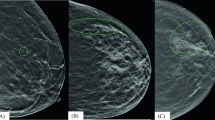Abstract
Background and Aims
Endoscopic papillectomy is a safe and effective treatment for ampullary adenomas and has mostly replaced surgical local resection. Recent data have discussed the role of endoscopic removal of laterally spreading adenomas associated with ampullary adenomas. We evaluated our long-term results of endoscopic papillectomy for ampullary adenomas.
Methods
We retrospectively analyzed patients who underwent endoscopic papillectomy of biopsy-proven adenomas at our tertiary center between 1994 and 2017. Clinical success was defined as complete excision of an adenoma with no evidence of recurrence during follow-up, no evidence of cancer, and without the need for surgery.
Results
A total of 161 patients (73M/88F) with a mean age of 61 (range 19–93) were included. Mean adenoma size was 20 mm (range 5–70). In total, 114/161 patients continued endoscopic surveillance for a minimum of 6 months with a median follow-up of 30 months (range 6–283). Recurrent adenomas were diagnosed in 8 patients (7%) after a median of 36 months (range 12–138). Clinical success was 83%; 35 laterally spreading adenomas were treated, which were larger than adenomas confined to the papilla (mean size 38 mm vs 15 mm, P < 0.05) and required more piecemeal resections (77% vs 15%, P < 0.05). However, no difference was found in recurrence rates between the two groups (8% vs 4%, P = 0.26); 24/161 (15%) of patients had adverse events including bleeding (6%) and pancreatitis (7%).
Conclusions
Endoscopic papillectomy is a safe and effective treatment for ampullary adenomas, including laterally spreading ones. Long-term surveillance demonstrates low recurrence rates at expert centers.




Similar content being viewed by others
References
Martin JA, Haber GB. Ampullary adenoma: clinical manifestations, diagnosis, and treatment. Gastrointest Endosc Clin N Am. 2003;13:649–669.
Perzin KH, Bridge MF. Adenomas of the small intestine: a clinicopathologic review of 51 cases and a study of their relationship to carcinoma. Cancer. 1981;48:799–819.
Suzuki K, Kantou U, Murakami Y. Two cases with ampullary cancer who underwent endoscopic excision. Prog Dig Endosc. 1983;23:236–239.
Han J, Kim MH. Endoscopic papillectomy for adenomas of the major duodenal papilla (with video). Gastrointest Endosc. 2006;63:292–301.
Espinel J, Pinedo E, Ojeda V, et al. Endoscopic ampullectomy: a technical review. Rev Esp Enferm Dig. 2016;108:271–278.
Onkendi EO, Naik ND, Rosedahl JK, et al. Adenomas of the ampulla of Vater: a comparison of outcomes of operative and endoscopic resections. J Gastrointest Surg. 2014;18:1588–1596.
Alvarez-Sanchez MV, Oria I, Luna OB, et al. Can endoscopic papillectomy be curative for early ampullary adenocarcinoma of the ampulla of Vater? Surg Endosc. 2017;31:1564–1572.
Rustagi T, Irani S, Reddy DN, et al. Radiofrequency ablation for intraductal extension of ampullary neoplasms. Gastrointest Endosc. 2017;86:170–176.
Cheng CL, Sherman S, Fogel EL, et al. Endoscopic snare papillectomy for tumors of the duodenal papillae. Gastrointest Endosc. 2004;60:757–764.
Patel R, Varadarajulu S, Wilcox CM. Endoscopic ampullectomy: techniques and outcomes. J Clin Gastroenterol. 2012;46:8–15.
Ridtitid W, Tan D, Schmidt SE, et al. Endoscopic papillectomy: risk factors for incomplete resection and recurrence during long-term follow-up. Gastrointest Endosc. 2014;79:289–296.
Napoleon B, Gincul R, Ponchon T, et al. Endoscopic papillectomy for early ampullary tumors: long-term results from a large multicenter prospective study. Endoscopy. 2014;46:127–134.
Catalano MF, Linder JD, Chak A, et al. Endoscopic management of adenoma of the major duodenal papilla. Gastrointest Endosc. 2004;59:225–232.
Irani S, Arai A, Ayub K, et al. Papillectomy for ampullary neoplasm: results of a single referral center over a 10-year period. Gastrointest Endosc. 2009;70:923–932.
Hopper AD, Bourke MJ, Williams SJ, et al. Giant laterally spreading tumors of the papilla: endoscopic features, resection technique, and outcome (with videos). Gastrointest Endosc. 2010;71:967–975.
Cotton PB, Eisen GM, Aabakken L, et al. A lexicon for endoscopic adverse events: report of an ASGE workshop. Gastrointest Endosc. 2010;71:446–454.
Chathadi KV, Khashab MA, Acosta RD, et al. The role of endoscopy in ampullary and duodenal adenomas. Gastrointest Endosc. 2015;82:773–781.
Moon JH, Choi HJ, Lee YN. Current status of endoscopic papillectomy for ampullary tumors. Gut Liver. 2014;8:598–604.
Hornick JR, Johnston FM, Simon PO, et al. A single-institution review of 157 patients presenting with benign and malignant tumors of the ampulla of Vater: management and outcomes. Surgery. 2011;150:169–176.
Elek G, Gyori S, Toth B, et al. Histological evaluation of preoperative biopsies from ampulla vateri. Pathol Oncol Res. 2003;9:32–41.
Yamaguchi K, Enjoji M, Kitamura K. Endoscopic biopsy has limited accuracy in diagnosis of ampullary tumors. Gastrointest Endosc. 1990;36:588–592.
Klein A, Qi Z, Bahin FF, et al. Outcomes after endoscopic resection of large laterally spreading lesions of the papilla and conventional ampullary adenomas are equivalent. Endoscopy. 2018;50:972–983.
Author information
Authors and Affiliations
Corresponding author
Ethics declarations
Conflict of interest
Dr. Irani and Dr. Ross both serve as consultants to Boston Scientific. Dr. Kozarek received research support from Boston Scientific regarding biliary and pancreatic self-expanding metal stents. The remaining authors have no financial relationships relevant to this article.
Ethical approval
For this type of retrospective study, formal consent is not required.
Additional information
Publisher's Note
Springer Nature remains neutral with regard to jurisdictional claims in published maps and institutional affiliations.
Rights and permissions
About this article
Cite this article
Sahar, N., Krishnamoorthi, R., Kozarek, R.A. et al. Long-Term Outcomes of Endoscopic Papillectomy for Ampullary Adenomas. Dig Dis Sci 65, 260–268 (2020). https://doi.org/10.1007/s10620-019-05812-2
Received:
Accepted:
Published:
Issue Date:
DOI: https://doi.org/10.1007/s10620-019-05812-2




